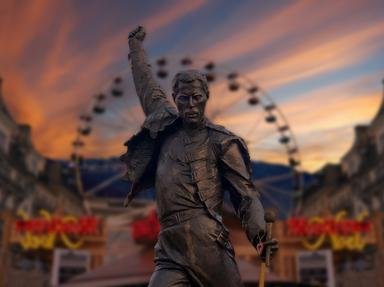
By Queen - or One of Its Members Quiz
Each member of Queen is responsible for writing a number of their most famous tracks, so can you match each songs with its credited writer, whether it was Freddie Mercury, Brian May, Roger Taylor, John Deacon, or credited to the four as a group?
A classification quiz
by Red_John.
Estimated time: 3 mins.
- Home
- »
- Quizzes
- »
- Music Trivia
- »
- Music Q-S
- »
- Queen